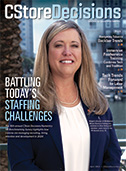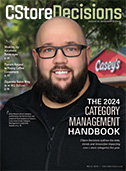The Power of Collaboration
IN THIS ERA OF unlimited options, an abundance of competition and time-starved customers, retailers need to ensure they have the right products, at the right time and at the right price. It’s simple, really, if you don’t, someone else will.
Satisfying consumers’ growing demands requires a great amount of acumen, understanding and hard work, but it also necessitates strong relationships with your vendors and wholesalers. Such collaboration of some sort between retailers, suppliers and manufacturers has become more vital to success as consumers grow more demanding. Such collaboration helps deliver significant long-term value for all parties.
Not only has the industry matured through the years making competition with other c-stores much more difficult, drug stores, dollar stores and supermarkets are refining their offerings—and pricing—to target c-store customers.
Traditionally, retailers and manufacturers’ collaborative efforts have focused on areas such as in-store programs and merchandising. However, expanding those relationships can have a substantial impact on sales, according to a study by McKinsey & Co. The most collaborative companies increased revenues by 3.7% more than the average company, the report found.
Based on the study, McKinsey & Co. identified six steps that can enhance the collaborative effort to help both sides drive new profi ts:
1. COLLABORATE IN AREAS WHERE YOU HAVE SOLID FOOTING. The most successful collaborations build on strengths rather than compensate for weaknesses. A manufacturer seeking to collaborate with a retailer in the hopes of improving its forecasting performance, for instance, will have little to gain from access to the retailer’s point-of-sale data unless it has the in-house analytical capabilities to make effective use of the data.
2. AGREE ON BENEFIT-SHARING MODELS. Rather than shying away from seemingly unbalanced collaborations, companies can make them work by recognizing the potential imbalance, identifying the benefi ts of collaboration, and developing ways to share the benefits more fairly—for example, through discounts or price increases.
3. SELECT PARTNERS BASED ON CAPABILITIES, STRATEGIC GOALS AND VALUE POTENTIAL. Many companies aim to collaborate with their largest suppliers or customers—but the largest partner may not be the best. A smaller partner may value a collaboration more than a big partner who is already juggling similar efforts. A better approach is to assess potential partners across three dimensions. First, is there enough potential value in collaborating with this partner? Second, do both parties have suffi ciently common strategic interests? Third, does the partner have the infrastructure and processes to provide a strong foundation for the collaboration?
4. DEDICATE CROSS-FUNCTIONAL RESOURCES AND ENSURE SENIOR LEADERSHIP INVOLVEMENT. A successful collaboration begins at the top, with a steering committee of senior leaders who not only set the defining vision for the effort, but also have the power to allocate the necessary resources to support it.
5. JOINTLY MANAGE PERFORMANCE AND MEASURE IMPACT. Both parties should use the same metrics and performance-management system. McKinsey recommends that partners select and track the smallest number of metrics required to provide a clear picture of the effort’s overall performance. Partners should schedule regular problem-solving sessions to address trade-offs.
6. COLLABORATE FOR THE LONG TERM. The final ingredient for a successful collaboration is stamina. Through joint planning sessions and multi-year performance metrics, both parties must define long-term objectives and develop a road map for future collaborative initiatives.
The payoff from collaborative efforts can be tremendous. On the pages ahead you will learn about some of the leading suppliers and manufacturers doing business in the convenience store industry. I urge you to learn about them and understand what they do so you can forge new, successful collaborations to grow your business.




